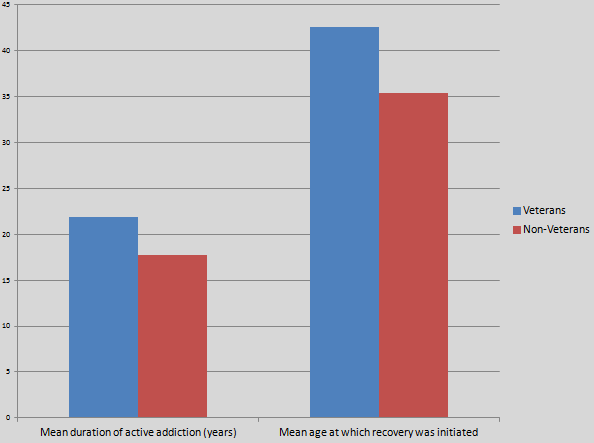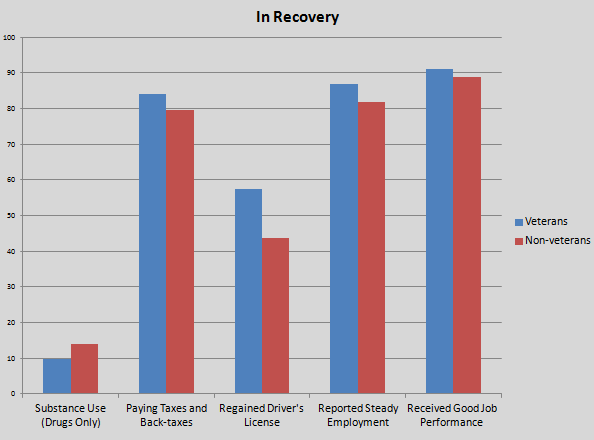Life Experiences of Veterans in Addiction & Recovery: A Comparison
Substance use disorders are among the most common and costly conditions among veterans. Veterans report higher rates of diagnosed alcohol use disorder and drug use disorder than non-veterans; however, they report lower rates of treatment and recovery service utilization.
High rates of alcohol use and misuse following combat is found to be co-morbid with relationship and aggression problems, depression, PTSD, homelessness and criminal justice involvement.
The data that Laudet et al. analyzed were from the national Life in Recovery Survey. This study compared life experiences in active addiction and since entering recovery between veterans and non-veterans in order to inform service development, evaluation, research and policy.
The veteran population made up roughly 15.1% of the study participants (n=481), contained one-third as many women as the non-veteran sample (23% vs. 62.6%), and were 3 times more likely to be over the age of 66 compared to the non-veterans sample.
The data were gathered in a brief, online anonymous survey and 3,176 surveys were completed. The pool of items used to examine life experiences included both positive “pay bills on time?” and negative “frequently miss work or school?” questions. Analyses were conducted to compare socio-demographics, background, and recovery experiences between veterans and non-veterans.
The domains of life examined were:
- financial
- legal
- health
- employment
- family functioning

Notably:
- Fewer veterans reported “drugs only” as the primary substance used (9.4% vs. 14%)
- While in active addiction, similar percentages of veterans and non-veterans reported negative experiences in all domains of life that were examined
- While in active addiction, an increased percentage of veterans reported financial problems, involvement with the criminal justice system, (reduced) family participation, and untreated emotional health issues

Individuals in recovery reported significant improvement concerning their experiences in all areas of their lives compared to when they were in active addiction.
IN CONTEXT
Veterans and non-veterans both reported experiencing negative consequences of substance use during active addiction. However, veterans are more likely to experience financial problems and be involved in criminal acts; this may be explained by their tendency to be in active addiction for longer than non-veterans. While veterans and non-veterans received treatment at the same rate, veterans took longer to access treatment. Possibly as a result, veterans may have accrued more negative consequences . Finding effective ways to intervene earlier when veterans are in active addiction may help to reduce the number of negative consequences that veterans report, therefore, increasing the chances of earlier remission and enhanced quality of life. Additionally, by creating interventions that are tailored more specifically to addressing the needs of veterans with SUD, the economic cost and burden on veterans, their families, and society may be reduced.
CITATIONS
Laudet, A., Timko, C., & Hill, T. (2014). Comparing life experiences in active addiction and recovery between veterans and non-veterans: A national study. Journal of addictive diseases, 33(2), 148-162.

